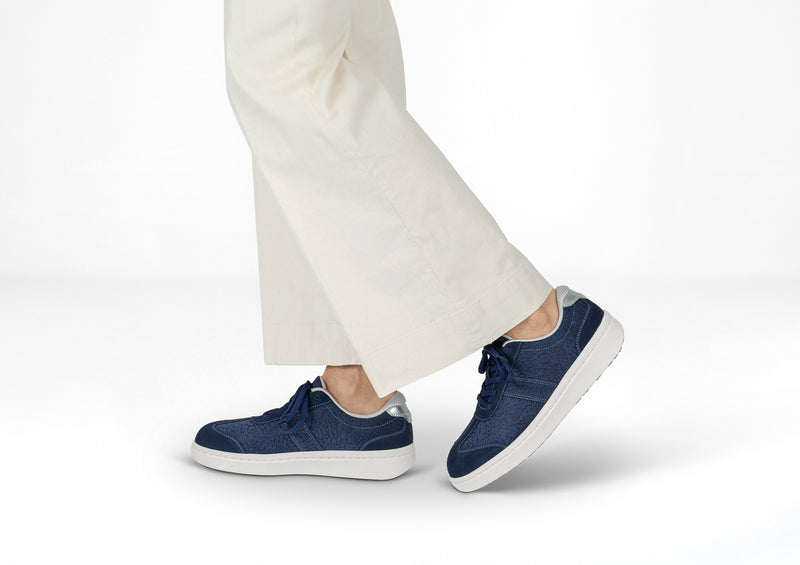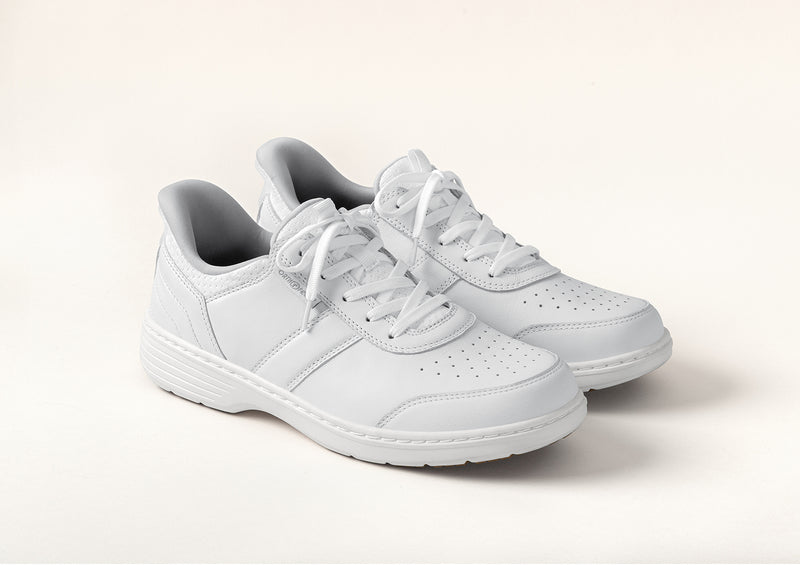- Stretch them so that they fit you more comfortably.
- Purchase shoes that are specifically designed for feet with bunions.
How to Stretch Shoes for Bunions
Take it to a shoemaker
Naturally, shoemakers or shoe repair shops are skilled in stretching shoes, using professional tools and machines. Unfortunately, these shops are becoming more and more rare, but if you can find one in your area it can be a good solution.Use a professional shoe stretching tool
Shoe stretchers usually come with a liquid or spray that you apply on your shoe before you insert the stretcher into it. Stretching liquids and sprays are available for a variety of shoe materials - fabric, leather and vinyl - and they loosen up the material, making the stretching process more effective.
Once you insert the stretcher, you need to twist its widening handle to expand the shoe. Then, leave the shoe stretcher inside the shoe for 24 hours, until your shoes are wide enough.
Apply heat
This simple method is best used on shoes made from leather or suede, because other materials could be ruined by the heat.
Before heating your shoes, put on a thick pair of socks and slip your feet into your shoes. Then, take a hair dryer, turn it on high and point the hot air toward the tight areas of your shoe. Continue blowing the hot air, while simultaneously stretching the shoe by wiggling and flexing your feet and toes.
Once you’ve shut off the dryer, continue wearing your shoes with the thick socks for a little longer.
Spray rubbing alcohol.
First, mix 50% water with 50% rubbing alcohol and spray or rub it on your shoes. Next, wear the shoes immediately after treating them with the alcohol, repeating the process if necessary. However, don’t overuse the spray as it could damage the shoe fabric. This method works best on natural fabrics.
Stuff your shoes with potatoes or wet newspapers.
Insert a bag of ice
Shop Now for Bunions Shoes
Do tight shoes make bunions worse?
The short answer is: yes!
The more detailed answer is that bunions are usually caused by genetic or congenital biomechanical defects in the foot. Bunions are more common in women, because their joints and ligaments are more flexible, resulting in increased motion. This excess motion exacerbates the faulty foot structure, causing bones to shift and resulting in bunions.
Bunions can also develop due to other foot conditions, such as flat feet and abnormal bone structure.
If the problematic area of the bunions is jammed in the shoe, as is the case with shoes that are too tight, the forefoot is pushed forward into the toe box. This crowds the toes, applies pressure on the big toe, exacerbates the defective foot structure and worsens the symptoms of bunions.
“Although preventing bunions is not possible, shoes can and do affect the severity of the anatomical changes that occur in bunion formation and the associated symptomology,” explains Dr. Steven Gershman, a podiatrist.
“Basically, the more the shoe forces the big toe toward the second toe and allows excess motion, the worse the deformity”.
Still, tight shoes are not the only culprit and there are other causes that can make things worse for your bunions:
- High heel shoes and narrow pointed shoes that also crowd the toes.
- Spending long hours on your feet.
- Foot conditions such as arthritis, overpronation, flat feet and more.
Can shoes be stretched to accommodate bunions?
Bunions create a bump on the interior side of the foot, just under the big toe, angulating the big toe toward the second toe. Naturally, this bump adds width to the foot and can become larger due to pressure applied by the shoe.
So basically, bunions don’t only cause pain and even balance issues, but can also make it hard to find shoes that fit properly.
Stretching shoes to accommodate bunions can help and you can even find good stretchers that push the toe box in one specific spot, directly over the bump of the bunion.
But, although stretching can help, the width of the shoe is not the only factor to take into account when looking for shoes that are best for bunions.
Why it's better to buy shoes for bunions rather than stretch them?
We’ve already established that increased motion in the foot is a major cause of bunions, while various foot conditions, such as overpronation, can make matters worse. So, buying shoes that help address these issues can also help your bunions.
More specifically, good quality orthotics that support the arch, align the foot, help straighten the toes and correct the gait, can treat overpronation and the increased motion it causes, and therefore alleviate bunion symptoms, pain and discomfort.
Moreover, using orthotics in the early stages of bunions is believed by many podiatrists to significantly slow down the progression of the bunions.
But orthotics are not the only design feature that can treat and even prevent bunions.
Look for the following design features and shoes:
- Wide enough front to accommodate your toes and bunions comfortably. The best toe box for bunions is wide, high and round, with extra depth for the big toe. Extra depth shoes also allow you to insert custom orthotics if you need to, and help reduce excess motion.
- Wide width shoes that, together with the deep toe box, can make all the difference to your bunions, provide relief and prevent the bunions from getting worse.
- Shoes made from a stretchy material that eliminates pressure on the bunions. The best pressure-free material would be one that can not only stretch, but also conform to the contour of your foot and bunion.
- Shoes with straps or laces that allow you to adjust the fit if you need to, because the size of your bunion can change over time and even during the day.
- Low heels or flat shoes that don’t push your feet into the ground, applying pressure on your toes.
- Ergonomic sole, preferably with a mild rocker bottom that decreases joint movement and disperses the pressure evenly across the foot.
Finally, here’s a tip on how to lace shoes for bunions.
Use the bunion step-over technique. With this technique, you simply bypass the eyelet that overlays your big toe joint. This lacing method significantly minimizes the pressure on the bunion.


